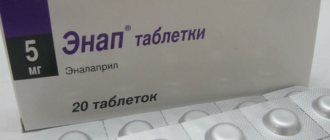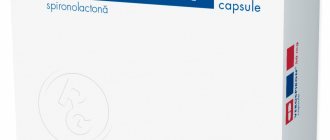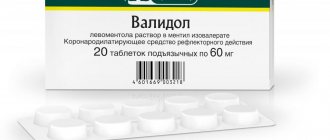Home | About us | Delivery | Advertisers | Login | Registration
Delivery on Sundays and holidays does not work!
- Medicines
- dietary supplementsVitamins
- Categories from A to Z
- Brands from A to Z
- Products from A to Z
- Medical equipment
- beauty
- Child
- Care
- Honey products appointments
- Herbs and herbal teas
- Medical nutrition
- Journey
- Making medicinesStock
Pharmacy online is the best pharmacy in Almaty, delivering medicines to Almaty. An online pharmacy or online pharmacy provides the following types of services: delivery of medicines, medicines to your home. Online pharmacy Almaty or online pharmacy Almaty delivers medicines to your home, as well as home delivery of medicines in Almaty.
my basket
Apteka84.kz is an online pharmacy that offers its customers medicines, medicinal and decorative cosmetics, dietary supplements, vitamins, baby food, intimate products for adults, medical equipment and thousands of other medical and cosmetic products at low prices. All data presented on the Apteka84.kz website is for informational purposes only and is not a substitute for professional medical care. Apteka84.kz strongly recommends that you carefully read the instructions for use contained in each package of medicines and other products. If you currently have any symptoms of the disease, you should seek help from a doctor. You should always tell your doctor or pharmacist about all the medicines you take. If you feel you need further help, please consult your local pharmacist or contact our GP online or by telephone.
© 2021 Pharmacy 84.
Instructions for use of Panangin drugs
Pharmacodynamics:
the most important intracellular cations of potassium (K+) and magnesium (Mg++) play a key role in the functioning of numerous enzymes, in the formation of bonds between macromolecules and intracellular structures and in the mechanism of muscle contractility.
The intra- and extracellular ratio of potassium, calcium, sodium and magnesium ions affects myocardial contractility. Endogenous aspartate acts as a conductor of ions: it has a high affinity for cells, due to the slight dissociation of its salts, ions in the form of complex compounds penetrate into the cells. Magnesium and potassium aspartates improve myocardial metabolism. Lack of magnesium/potassium predisposes to the development of arterial hypertension, atherosclerosis of the coronary arteries, arrhythmias and metabolic changes in the myocardium. Taking magnesium and potassium aspartates helps compensate for the lack of these electrolytes in food. Pharmacokinetics:
Magnesium
The total supply of magnesium in the body of a person weighing 70 kg is on average 24 g (1000 mmol); more than 60% of magnesium comes from bone tissue and about 40% from skeletal muscle and other tissues. About 1% of the total magnesium reserve in the body is found in the extracellular fluid, mainly in the blood serum. In healthy adults, the content of magnesium in the blood serum is in the range of 0.7-1.10 mmol/l. Magnesium is absorbed from the gastrointestinal tract by active transport. The main regulator of magnesium balance in the body is the kidneys. 3-5% of ionized magnesium is excreted by the kidneys. An increase in urine volume (for example, during loop diuretic therapy) leads to an increase in the excretion of ionized magnesium. If magnesium absorption in the small intestine is reduced, subsequent hypomagnesemia leads to a decrease in its excretion (less than 0.5 mmol/day).
Potassium
The total potassium reserve in the body of a person weighing 70 kg is on average 140 g (3570 mmol). The total potassium reserve is slightly less in women than in men and decreases slightly with age. 2% of the total potassium reserve in the body is located outside the cells, and the remaining 98% is inside the cells. Potassium is absorbed in the gastrointestinal tract. The optimal intake of potassium from food is 3-4 g (75-100 mmol) per day. The main route of potassium excretion is renal (about 90% of potassium is excreted by the kidneys daily). The remaining 10% is excreted through the gastrointestinal tract. Thus, the kidneys are responsible for long-term potassium homeostasis as well as plasma potassium levels. In the short term, blood potassium levels are also regulated by the flow of potassium between the intracellular and extracellular spaces.
Panangin tablets p/o No. 50 No. 1
Name
Panangin tablet p/pl.ob. in fl. No. 50 in pack. No. 1
Main active ingredient
Potassium and magnesium aspartate
Release form
Pills
Compound
Each film-coated tablet contains: active ingredients: potassium aspartate 158 mg (in the form of potassium aspartate hemihydrate 166.3 mg); magnesium aspartate 140 mg (in the form of magnesium aspartate tetrahydrate 175 mg); excipients: anhydrous colloidal silicon dioxide, potato starch, povidone K-30, magnesium stearate, talc, corn starch; film shell: macrogol 6000, titanium dioxide (E 171), main copolymer of butylated methacrylate (eudragit E), talc.
Description
White or almost white, film-coated tablets, disc-shaped, with a biconvex, slightly glossy and slightly uneven surface, almost odorless.
Pharmacological properties
Pharmacodynamics
Magnesium and potassium ions are important intracellular cations and play a key role in the functioning of numerous enzymes, in the formation of bonds between macromolecules and intracellular structures, as well as in the molecular mechanism of muscle contractility. The intra- and extracellular ratio of potassium, calcium, sodium and magnesium ions affects myocardial contractility. Endogenous aspartate acts as a conductor of ions: it has a high affinity for cells, due to the slight dissociation of its salts, ions in the form of complex compounds penetrate into the cell. Potassium aspartate and magnesium aspartate improve myocardial metabolism. Potassium/magnesium deficiency increases the risk of developing arterial hypertension, atherosclerosis of the coronary arteries, arrhythmias and metabolic changes in the myocardium.
Pharmacokinetics
Magnesium The total supply of magnesium in the body of a person weighing 70 kg is on average 24 g (1000 mmol); more than 60% of magnesium comes from bone tissue and about 40% from skeletal muscle and other tissues. About 1% of the total magnesium reserve in the body is found in the extracellular fluid, mainly in the blood serum. In healthy adults, serum magnesium levels range from 0.7 to 1.10 mmol/L. The recommended dietary intake of magnesium for men is 350 mg per day, for women - 280 mg per day. The need for magnesium increases during pregnancy and breastfeeding. Magnesium is absorbed from the gastrointestinal tract by active transport. The main regulator of magnesium balance in the body is the kidneys. 3-5% of ionized magnesium is excreted by the kidneys. An increase in urine volume (for example, during therapy with highly effective loop diuretics) leads to an increase in the excretion of ionized magnesium. If absorption of magnesium in the small intestine is reduced, subsequent hypomagnesemia leads to decreased excretion (
Indications for use
As an additional source of potassium and magnesium. As prescribed by the attending physician: - as part of complex therapy for chronic heart diseases (heart failure in the post-infarction period), rhythm disturbances, especially ventricular arrhythmias; - as an additional therapy when taking cardiac glycosides.
Contraindications
- hypersensitivity to the active substances or to any of the excipients; - acute or chronic renal failure; - Addison's disease; — atrioventricular block of the third degree; — cardiogenic shock (blood pressure less than 90 mm Hg); - children under 18 years of age.
Use during pregnancy and lactation
There is no data indicating a negative effect of Panangin® during pregnancy or breastfeeding.
Directions for use and doses
Adults Recommended daily dose: 1-2 tablets 3 times a day. The daily dose can be increased to 3 tablets 3 times a day. Directions for use: For oral administration. Panangin® should be taken after meals, as the acidic environment of the stomach may reduce the effectiveness of the drug.
Side effect
- increased frequency of stools is possible when using high doses of the drug. Reports of Suspected Adverse Drug Reactions Reports of suspected adverse drug reactions received after registration of a medicinal product are extremely important. This allows continued monitoring of the benefit/risk ratio. Health care professionals are asked to report any suspected adverse reactions using the national reporting system.
Overdose
There is no information about overdose with drugs containing potassium aspartate and magnesium aspartate, even when taking high doses. Given the ability of the kidneys to excrete large amounts of potassium, increasing the dose of the drug can lead to hyperkalemia only against the background of acute or obvious disturbances in potassium excretion. Magnesium has a wide therapeutic window, and in the absence of renal failure, serious side effects are extremely rare. According to the literature, taking oral magnesium supplements may cause mild adverse reactions such as diarrhea. High doses of Panangin® may cause increased bowel movements due to the magnesium it contains. Symptoms of hyperkalemia: general weakness, paresthesia, bradycardia, paralysis, arrhythmia. Symptoms of hypermagnesemia: nausea, vomiting, lethargic sleep, decreased blood pressure, bradycardia, weakness, hyporeflexia. Treatment: in case of overdose, stop taking the drug; Symptomatic treatment is recommended (intravenous administration of calcium chloride; if necessary, hemodialysis).
Interaction with other drugs
Drug interaction studies have not been conducted with drugs containing potassium aspartate and magnesium aspartate. According to scientific literature, potassium and magnesium may interact with certain medications. When used together with potassium-sparing diuretics, angiotensin-converting enzyme (ACE) inhibitors, beta-blockers, cyclosporine, heparin and non-steroidal anti-inflammatory drugs, the risk of developing hyperkalemia increases. Tetracyclines (orally), iron salts and sodium fluoride reduce the absorption of potassium aspartate and magnesium aspartate from the gastrointestinal tract. The break between taking the above drugs and Panangin® should be at least 3 hours.
Precautionary measures
Patients with diseases accompanied by hyperkalemia require special attention: regular monitoring of electrolyte levels in the blood serum is recommended. Use in pediatrics Panangin® is contraindicated in children and adolescents, because The safety and effectiveness of its use in this category of patients have not been established.
Storage conditions
Store at a temperature not exceeding 25 °C. Keep out of the reach of children.
Furosemide
Combinations not recommended
— Chloral hydrate
- Intravenous infusion of furosemide within a 24-hour period after administration of chloral hydrate may lead to skin flushing, profuse sweating, anxiety, nausea, increased blood pressure and tachycardia. Therefore, the use of furosemide in combination with chloral hydrate is not recommended.
— Aminoglycosides
- slowing down the excretion of aminoglycosides by the kidneys when used simultaneously with furosemide and increasing the risk of developing ototoxic and nephrotoxic effects of aminoglycosides. For this reason, the use of this combination of drugs should be avoided, except in cases where it is necessary for health reasons, in which case an adjustment (reduction) of maintenance doses of aminoglycosides is required.
Combinations that should be used with caution
— Ototoxic drugs
- furosemide potentiates their ototoxicity. Such drugs can be used simultaneously with Furosemide only for strict medical indications, since combined use can lead to irreversible damage to the hearing organ.
— Cisplatin
- when used simultaneously with furosemide, there is a risk of ototoxicity. In addition, the nephrotoxic effect of cisplatin may be enhanced when furosemide is used for forced diuresis during treatment with cisplatin, unless furosemide is used in a low dose (for example, 40 mg in patients with normal renal function) and without combination with appropriate hydration of the patient.
— Sucralfate
- a decrease in the absorption of furosemide when taken orally and a weakening of its effect (furosemide and sucralfate when taken orally should be taken at least two hours apart).
— Lithium salts -
under the influence of furosemide, the excretion of lithium is reduced, due to which the content of lithium in the blood serum increases, which increases the risk of its toxic effects, including cardiotoxic and neurotoxic effects. Therefore, when using this combination, monitoring of lithium levels in the blood serum is required.
-
(ACE)
inhibitors - the use of ACE inhibitors or angiotensin II receptor antagonists in patients previously treated with furosemide may lead to an excessive decrease in blood pressure with deterioration of renal function, and in some cases - to the development of acute renal disease insufficiency, therefore, 3 days before starting treatment or increasing the dose of ACE inhibitors or angiotensin II receptor antagonists, it is recommended to discontinue furosemide or reduce its dose.
— Risperidone
- Caution should be exercised, carefully weighing the balance of risk and benefit, before deciding to use a combination of risperidone with furosemide or other strong diuretics, as an increase in mortality was observed in elderly patients with dementia receiving concomitant treatment with risperidone and furosemide.
— Levothyroxine
- Furosemide in high doses can inhibit the binding of thyroid hormones to carrier proteins and thus lead initially to a transient increase in the concentrations of free thyroid hormones, and then, in general, to a decrease in the total concentration of thyroid hormones. When using this combination, thyroid hormone concentrations should be monitored.
Interactions to Consider
— Nonsteroidal anti-inflammatory drugs ( NSAIDs)
- NSAIDs, including acetylsalicylic acid, can reduce the diuretic effect of furosemide. In patients with hypovolemia and dehydration (including while taking Furosemide), NSAIDs can cause the development of acute renal failure. Furosemide may increase the toxicity of salicylates.
— Phenytoin
- reduction of the diuretic effect of furosemide.
— Glucocorticosteroids, carbenoxolone, licorice preparations
in large quantities and prolonged use of laxatives when combined with furosemide increase the risk of developing hypokalemia.
— Cardiac glycosides, drugs known to prolong the QT interval
- in case of development of water-electrolyte balance disturbances (hypokalemia or hypomagnesemia) during the use of furosemide, the toxic effect of cardiac glycosides and drugs increases. causing prolongation of the QT interval (the risk of developing heart rhythm disturbances increases).
- Antihypertensives, diuretics or other drugs
that can lower blood pressure
- when combined with furosemide, a more pronounced decrease in blood pressure is possible.
- Probenecid, methotrexate or other drugs that, like furosemide,
are excreted in the renal tubules
, can reduce the effects of furosemide (same route of renal excretion); on the other hand, furosemide may lead to decreased renal excretion of these drugs. All this increases the risk of developing HP both with furosemide and the above-mentioned medications taken simultaneously with it.
— Hypoglycemic agents (both for oral administration and insulin preparations), pressor amines (epinephrine, norepinephrine)
- weakening of effects when combined with furosemide.
— Theophylline, diazoxide, curare-like muscle relaxants
- enhanced effects when combined with furosemide.
— Medicines with nephrotoxic effects
- when combined with furosemide, the risk of developing nephrotoxicity increases.
- High doses of some cephalosporins (excreted primarily by the kidneys)
- in combination with furosemide, the risk of nephrotoxicity of cephalosporins increases.
— Cyclosporine A
- when combined with furosemide, the risk of developing gouty arthritis increases due to hyperuricemia caused by furosemide and impaired renal urate excretion under the influence of cyclosporine.
— X-ray contrast agents —
Patients at high risk of developing nephropathy due to radiocontrast administration treated with furosemide had a higher incidence of renal dysfunction after administration of radiocontrast agents, compared with patients at high risk of developing nephropathy due to radiocontrast administration who received only intravenous fluids (hydration).




